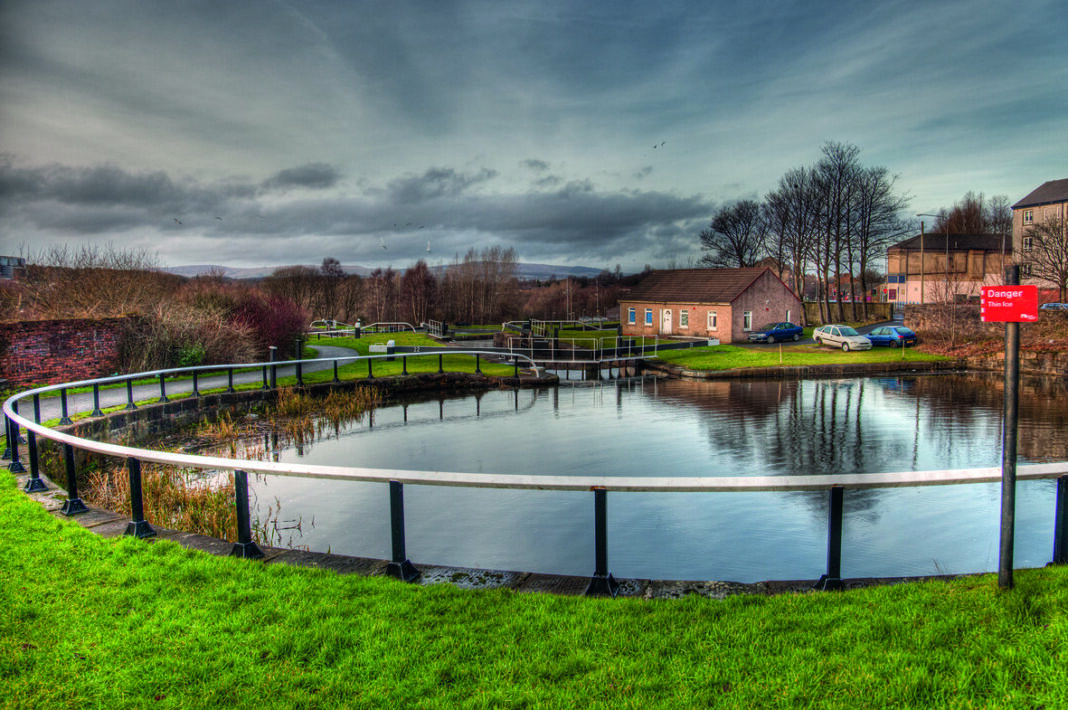
LIVING within 700 metres of a ‘well-developed’ canal can cut the risk of those living in deprived areas developing chronic life-shortening diseases by up to 15%, new research has revealed.
Data scientists from Glasgow Caledonian University (GCU) examined medical records of Glasgow’s two million population, before focusing on the 137,032 people living within 1,400 metres of the city’s Forth and Clyde Canal.
They found that people living in ‘deprived areas’ within 700 metre of the newly regenerated Forth and Clyde Canal had a 15% lower risk of suffering from cardiovascular disease, a stroke or hypertension. It also lowered the risk of diabetes by 12% and obesity by 10%.
Researchers from the GCU’s school of health and life sciences (SHLS) and school of computing, engineering and built environment (SCEBE) worked with Scottish Canals on the study, funded by The Data Lab, Scotland’s Innovation Centre for data and artificial intelligence.
SMART Technology Research Centre research fellow, Dr Zoë Tieges, lead author in the study, said, “We found that, in areas of high socioeconomic deprivation, living within 700m from the Clyde and Forth Canal was linked to a lower risk of chronic health conditions.
“On the whole, these findings suggest that residential exposure to blue infrastructure was associated with a lower risk for non-communicable diseases in the most deprived areas. We concluded that exposure to canals could be used to mitigate urban health inequalities.
“The study demonstrates that the regeneration of the Forth and Clyde Canal is having a real positive effect on people’s health and could help cut the high level of chronic disease often linked with areas of socioeconomic deprivation that is very costly to the NHS.
“It shows the canal is really improving people’s lives. Before the regeneration the canal was a dump and depressing but now people are enjoying interacting with nature, getting more exercise and socialising more in the community with events like the Canal Festival and places like the Whisky Bond.
“The whole area has completely changed and we have found the health promoting effect of this regeneration in the reduction in the number of people getting chronic health conditions, particularly in these deprived areas around the canal.”
Catherine Topley, CEO of Scottish Canals, added, “This study has brought the canal network of Scotland to the attention of the rest of the world, demonstrating that regenerating blue infrastructure improves public health and prevent chronic diseases.
“Our canal network in Scotland consists of 140 miles of linear waterways that flow through some of the country’s most challenged areas. Given that 1.5 million people in Scotland live near inland waterways, the research’s potential to reduce inequalities and improve the lives of millions of people, not only in Scotland but throughout the world is evident. All we need to do now is utilise it to influence investment decisions.”
Brian Hills, interim CEO of The Data Lab, commented, “Scotland’s canals clearly offer a variety of unique health benefits to those living nearby, and for economically-disadvantaged communities across the country where health inequality is an urgent issue, it’s exciting to see data science demonstrating how vital the regeneration of these disused urban blue spaces actually is.
“We hope that these findings help guide Scottish Canals about how best to invest in regeneration in order to deliver the biggest improvement in health among local people living close to canals in Scotland, knowledge that can then be shared with canal authorities worldwide.”











